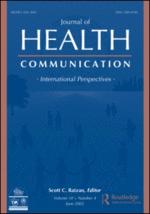Text to Change (TTC), an mHealth non-profit organization based in the Netherlands, announced earlier this month that they will receive a €2.7 million grant to expand its services. TTC provides an SMS-based educational service to improve the health of citizens in eight countries in Africa and one in South America.
Already a big contributor in mHealth development, TTC hopes to become a leader in the field with the reception of its multi-million Euro grant from the Dutch Ministry of Foreign Affairs via Connect4Change (C4C), a consortium funded by the Dutch Ministry of Foreign Affairs that develops mobile based solutions on issues of poverty in Africa and Latin America. TTC will partner with C4C to expand its services to 11 more countries in Africa and South America by the end of this year.
Implementing ICT in the 11 countries is a top priority for both TTC and C4C. They are hoping the mutual partnership will make establishing ICT services an easier task as the expansion continues. According to TTC, the game plan calls for TTC to provide “low” technologies like SMS and mobile voice services while C4C provides “high” technologies such as mobile internet and video transfer. Therefore, TTC and C4C will play different roles.
C4C will also invest its time reaching out to local entities on the ground to strengthen ICT networks. TTC will focus on improving health outcomes through their established mobile phone initiatives.
TTC sets up their mobile platform through the recipient country’s mobile service infrastructure already in place. They then subscribe mobile phone users to their programs which use SMS communication to inform people of HIV testing, treatment clinics, and other health related services at no cost to the recipients.
TTC programs offer the information through a free educational quizzing service where participants are quizzed about a specific health topic. As participants answer the questions correctly, they are sent more rounds of questions, again at no cost. If the participant can answer enough questions correctly, he/she receives incentives such as phone credit, t-shirts and health products.
Thus far, TTC has reached thousands of individuals with their programs on HIV/AIDS, malaria, and reproductive health. Furthermore, to assess the impact of ICT in the countries they are currently working in, TTC will even conduct large scale ICT evaluations over the next few years in those countries.
TTC is poised to make an impact in ICT through their mobile services. Their work is just another example of how mobile phones are being used as a medium to educate, inform and save lives. The tag-team partnership with C4C will be expanded to all 11 target countries by the end of this year. However, we will have to wait some time before confirming the outcome of this joint strategic approach.









 Journal of Health Communication is now exclusively using an online submission and review system,
Journal of Health Communication is now exclusively using an online submission and review system, 




































